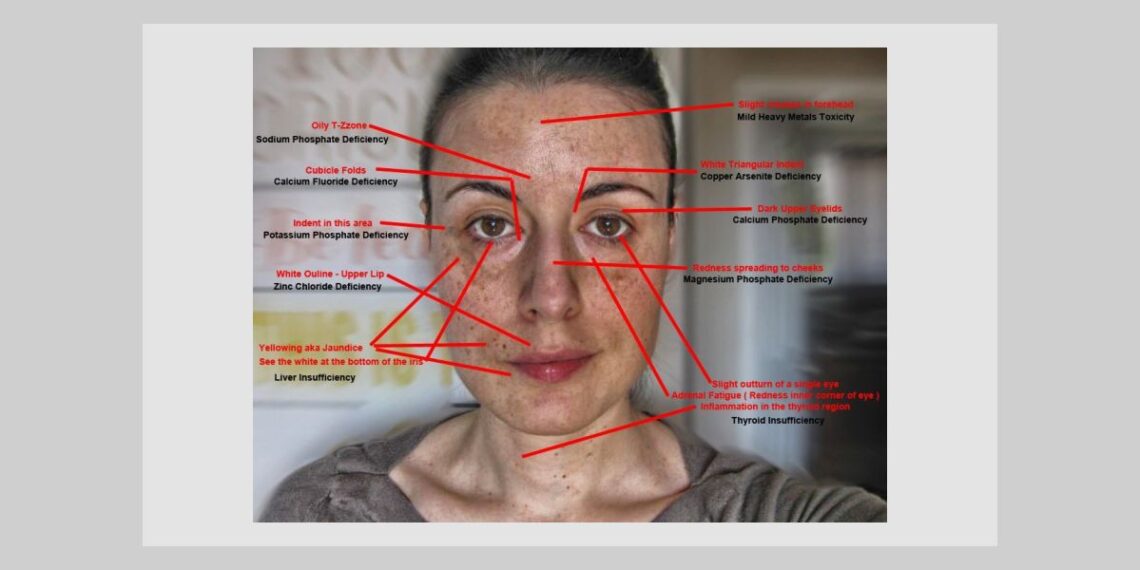– A patient’s plight – explaining homoeopathy to others
– Homoeopathic seekers of knowledge
– Homoeopathy’s real and deeper knowledge
– The dangers of personalized homoeopathy
– Why I wrote Soul & Survival
The following article is about what Soul & Survival is, what it’s about and why I wrote it for the general public as well as the profession.
Soul & Survival differs from my two previous books Appearance and Circumstance and Homoeopathic Facial Analysis, because it focuses on understanding the mechanics, reasons and causes of chronic disease, rather than being a step by step guide to practice.
Soul & Survival is homoeopathic philosophy written in contemporary language, so everyone regardless of experience, can understand its principles. There are two objectives in Soul & Survival. The first is to make homoeopathic principles more easily understood by everyone, the second is to highlight that homoeopathic philosophy runs deeper than just finding a remedy.
The reason homoeopathic principles need to be understood by more people than homoeopaths, comes from my personal belief that the more obscure and incomprehensible we sound, the more criticism we will receive and the less referrals we will get. I know from past experience that some practitioners get very touchy about this point, denying that they have to worry about such things as patient numbers. All I can say is that my personal practice has been different from many others.
I have lost count of how many times a patient – happy with the progress they have made – takes a number of my business cards to hand out to friends. On their return visit a month or so later, this happy patient enthusiastically asks whether any of her friends have contacted me. Unfortunately my reply is generally the same – ‘not yet’ I say with a smile. ‘That’s odd because I have been telling everyone how good you are and I have handed your cards out to everyone’. Embarrassed, this patient will no longer be my spokesperson unless asked by one of her friends directly. What went wrong? When a patient refers a medical practitioner or some other type of specialist, friends are usually thankful, but for me this was not the case.
There is no simple answer to this question, but the answer can be divided into two parts. Firstly, homoeopathy like many alternative medicines, has had a lot of negative press, so many people are too scared or skeptical to give it a go. Unfortunately this is a problem we do not have the resources to properly defend. The second problem is also difficult, but not as insurmountable. The source of the problem is this. Try defining homoeopathy, what it is and how it works, in one or two easily understood paragraphs; it is a very difficult task. Now try doing it without proper homoeopathic knowledge and you see the difficulty my happy patient is in.
In the beginning of my clinical practice I spent more time than I should explaining how homoeopathy worked to every patient who asked. This simple or just polite question would send me into as much detail as I could remember, explaining Hahnemann, provings and the law of similars. At that stage of practice I was so into clear explanations, that I forgot to notice my patient’s eyes clouding over as their enthusiasm and consciousness switched off. In my enthusiasm I was not only talking too much and being far too detailed, I was also talking in a foreign language my poor patient had no hope of understanding. Provings, potency, centesimal scales, Hering’s law and the infinitesimal dose, were all foreign concepts that muddied the water rather than clarified it.
Too many times I watched my patients’ enthusiastic faces, become increasingly confused and concerned as I tried to explain how I was giving them a substance that would cause the same complaint in a healthy person, and that they may get an aggravation – but not to worry. Trying to salvage their growing concern, I would move the topic quickly to potency and explain how diluting a substance actually makes it stronger and how there was nothing in the remedy I was charging them for! Now completely confused and much of the good rapport established during the consultation gone, they would hesitatingly ask ‘what is actually in this remedy, I mean, what exactly is it made of?’ Have you ever noticed how many Arsenicum patients ask you this question?
Gladly I am no longer in this predicament thanks to time and experience, but my happy patient is, and this is one of the main reasons why none of her referrals manifested. How can patients successfully explain a philosophy that takes years to appreciate? The answer is they cannot, and this means one of our most important referral points – word of mouth – is severely limited by comparison to other modalities.
Soul & Survival is my attempt to change this problem by giving people usable explanations and logic to understand homoeopathic philosophy. Now both practitioner and patient alike can speak the same language.
Let’s take one example of how energy medicines work. We could fall back on the usual answer and say that two similar diseases can’t exist in the same body at the same time, which is absolutely true. And provided all of my patients are suffering from flu, gastro, chickenpox or syphilis this explanation is valid. But what about patients who present with cancer, rheumatoid arthritis or depression, not to mention ADHD, insomnia, migraines, hormonal dysfunction, altering moods, bi-polar disorder, lethargy, tumours, learning difficulties, sexual dysfunction, eczema, hayfever, difficulty conceiving, temper tantrums, nightmares and even hauntings? Treating these afflictions is not so easily explained because they do not come from infection. Many do not fit the model of chronic disease, yet I and every other homoeopath in practice have successfully treated them all.
The law of similars is a fact, but so too is the concept of energy and illness and this is far more easily understood than two competing forces. Not every patient will understand how a similar can cure, but everyone understands they are at their worst or in the most pain, when they are stressed or tired.
If homeopathy can treat these above conditions, yet they do not come from infection (similar disease), then how and why does homoeopathy work? The key as always is to learn from the clinic and apply what we see, rather than lose ourselves in an abstract construct. In every chronic disease, and this term is being applied regardless of whether the complaint is an actual disease as long as it is chronic by nature, the ailment in question is always linked to personal energy. The more tired or stressed the patient becomes, the worse their ailments will be. My happy patient may not have been able to convey the simillimum to her friends but she can talk to them about the principles of Soul & Survival, energy and illness, behaviour and reaction.
Homoeopathic philosophy touches all aspects of life. It is more than finding a remedy and deeper than matching a person to a remedy picture. Remedy matching, while clinically valuable, is in my opinion superficial when compared to homoeopathy’s real and deeper knowledge.
Hahnemann claimed that homoeopathy was nature herself at work and he was absolutely correct. Knowledge is a cycle that builds upon itself. The more we know about nature, the more knowledge we gain regarding homoeopathy, which in turn teaches us more about nature. The same is true for Homoeopathic Facial Analysis. Accumulating facial features from clinical successes added more clinical success, by applying facial features in practice. Soul & Survival continues this cycle, using clinical homoeopathy to understand human nature to a point where human nature is redefining homoeopathy. Homoeopathy was and remains more than clinical results. Homoeopathy is a reward for those prepared to stick it out and apply themselves to the task of learning about life – not just remedies.
Homoeopaths by nature have always been searchers. Look at how many were members of the ‘New Church’ that developed out of the teachings of Swedenborg. Kent’s writings on homoeopathic philosophy came directly from this influence, and it is no surprise to those acquainted with Rosicrucian mysticism to find Hahnemann using terms like vital force, after being employed as the personal librarian in Baron Bruckenthal’s library.
Homoeopathy came from understanding the mechanics of nature which was then applied to treat disease in the clinic. The more we can learn about life, the greater our clinical understanding becomes and in proportion our clinical results improve. This is why masters like Hahnemann, Kent, Allen and Roberts, never limited their studies alone to materia medica, but instead allowed themselves the liberty to examine nature in all her forms. Homoeopathic philosophy is mysticism made medical.
Remedies are our tools of trade but they do not provide deep understanding. It is my personal belief that the current trend of personalising remedies in an anthropomorphic way ie; Calc Carb people like to… while Mr Arsenicum always feels… a Staphisagria person would never act in such a manner, while the Mercury patients won’t stop… This genre (apologising in advance for ruffling the feathers of those who make a living out of lecturing these stories as insight) reduces homoeopathy back to a medieval medicine as it looks for omens, spurious connections and charms. Worse than this, ‘personalised homoeopathy’ could ultimately destroy the profession, because it breeds an unbridled self-indulgence that uses a patient’s sufferings as ‘fascinating entertainment’ and treats their treadmill of repeated reaction as humorous. Most dangerous of all, ‘personalised homeopathy’ creates patients out of practitioners, by turning people who should be out helping others into nonworking searchers for their own ‘constitutional remedy’.
Another problem with ‘personalised homoeopathy’, or at least its practitioners is that the rest of the world is no longer medieval but educated, discerning and far more sophisticated. The explanations or lack of them that ‘personalised homoeopathy’ demands is no longer good enough to an educated population seeking answers rather than amazement. This relegates homoeopathy to a limited clientele which is a very dangerous place to be in a market of predatory competitors.
I know all this talk about markets, business, money and competitors is vulgar by comparison to remedies and the simillimum, and historically like priests and artists we have always left mundane matters to mundane people, but who are we trying to kid? Unless practitioners are working and individuals feel they have good social prestige and that they are contributing to the community by practicing in their clinic, homoeopathy itself is wasted, and practitioners feel unappreciated and bad about themselves.
All my books – Appearance and Circumstance, Homoeopathic Facial Analysis and Soul & Survival – are practical guides to make homoeopathy easy, so practitioners can get out and practice, rather than talk about ‘amazing philosophies’.
Homeopathy was designed to serve the sick, to be a gift to the broken and a comfort to the hurt. It is an honour to practice and we are meant to give thanks that we are the ones chosen by God to receive this valuable information. This is how it should be, but this desire to serve has changed. Now it seems we need a homoeopathic JFK to remind us ‘not what homoeopathy can do for us, but what we can do for our patients and homoeopathy’.
I wrote Soul & Survival to break away from this trend, returning once more to the honourable tradition of using homoeopathic philosophy as a platform of knowledge so everyone can benefit. I wanted Soul & Survival to be like Kent’s lectures on homoeopathic philosophy; real mysticism without being hijacked by new-age self-indulgence.
In the past, mystic societies were ‘secret’, Freemasons and the Rosicrucians just to name two groups. As well as these groups we should also include monasteries, retreats and communities of learning. History tells us that in old world Europe the reason secret societies were secret, was because of the fear of Catholic reprisal. While this may have been true, it was equally as true that their secrecy meant that searchers of the truth – the dedicated ‘real’ mystics – had to go out of their way to pursue the knowledge they offered. Making people go out of their way and making them put in the hard yards by piecing information together slowly, was vital for maintaining the integrity of knowledge. Knowledge given easily was knowledge wasted, because it was too easily misunderstood and corrupted. Secrecy ensured that the seeker would only discover these societies when they were ready, and at a level deep enough to understand their philosophy.
The difference between popular new-age philosophy and the mysticism of Paracelsus, Bacon, Newton, Hahnemann and Kent, is that new-age focuses on ‘me’, while mysticism tries to understand ‘the system’. There was no ‘I’ in the writings of these thinkers; their motivation was to understand nature and the system of life as a whole. New-age is small and light by comparison. Its emphasis is always to try and understand the universe as it pertains to me. ‘What is the universe trying to tell me?’ is different from ‘how does the universe work?’
Soul & Survival is homoeopathic mysticism in its traditional sense because it explains how the forces of nature influence human character, memory and reaction. I wanted Soul & Survival to be about ‘the system’, to encourage the reader to look outward rather than promoting yet another introspective analysis of self.
As a book it encompasses mystic philosophy but always in a straight forward manner. Knowledge not shared is knowledge wasted, so I wrote this book to convey its ideas in common understandable language. All homoeopathic jargon has been removed so only knowledge remains. I hope that Soul & Survival can be read and understood by homoeopaths and non-homoeopaths alike. The target audience for Soul & Survival is those looking for the truth, not those looking just for ‘me’.
I spent many hours considering what I was seeing in the clinic and how I could bring these impressions to life for my readers – these concepts include,
* The universal forces of nature and how they impact on us physically and emotionally
* How individual human beings have evolved niches to help them remain in a group
* How these niches include talents and behaviour patterns designed to secure ourselves and give us the best chance of survival
* How nature never gives up any gains, or sacrifices what is valuable
* The true nature of the unconscious mind and how it governs our body and our emotional reactions
* Why we behave in predictable patterns when we are stressed
* Why we get along with some people but feel uncomfortable around others
* Why supposedly random events are actually repeating circumstances
* How the universal forces of outward, circular and inward motion influence not only health and illness but time, culture and human evolution
* Why we are attracted to a particular type of person and why a particular type person is also attracted to us
* Our internal battle between being the person we would like to be and understanding the animal inside us
Most important of all, Soul & Survival shows how fragile we are, how alike we are, why we have our demons and where they come from. It explains why we value the opinions of others far more than we like to admit we do. The intent of Soul & Survival is to explain why we think and feel in the manner we do. To help us come to terms with that side of our nature that causes most of our problems. With Soul & Survival we finally begin to see ourselves and others in totality.
The information for Soul & Survival was gathered from my patient’s life stories. It is not ‘personalised homoeopathy’ nor is it new-age in the sense I have described it. Soul & Survival readers are searchers of the system, those who want to see information in action. It is for practitioners who care about understanding patients because they have a genuine interest in others. The homoeopathic trilogy of Appearance and Circumstance, Homoeopathic Facial Analysis and now Soul & Survival, are my efforts at providing no-nonsense practical books for practitioners searching for reproducible clinical results and wanting to understand the philosophy of their own system.
Hahnemann, Allen, Roberts and Kent always knew homoeopathic philosophy was broader than its medical application. Soul & Survival shows just how far that philosphy extends.
———————————————–
Grant has been working and studying in various fields of natural therapies since 1987. Grant’s qualifications include Homeopathy, Naturopathy, Clinical Hypnosis and a Post Graduate Diploma in Eriksonian Psychotherapy. Grant is the current Principal and senior lecturer of the Victorian College of Classical Homeopathy, a position he has held since 1995.
His first book, Appearance and Circumstance(2003) details the nature of miasms and how facial analysis can be used to determine the patient’s dominant miasm. Homeopathic Facial Analysis (2006) continues this work with detailed descriptions and examples of facial analysis. Soul & Survival (2008) defines how miasms influence us in our daily lives and define our individuality.
Grant has lectured in Australia, New Zealand, the Middle East, USA and Europe.
Further information about Grant Bentley’s research and his books can be found on the Victorian College of Classical Homeopathy website http://www.vcch.org/miasm.html and the Soul & Survival website http://www.soulandsurvival.com/





